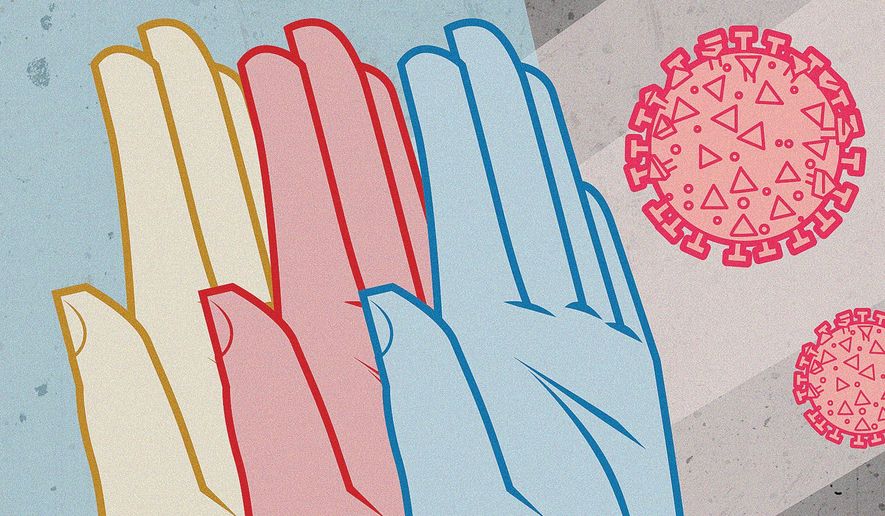OPINION:
The best defense against any highly infectious disease is to contain it at the source, and so it is with COVID-19. The virus certainly will spread to other countries with weak health infrastructure and go undetected until the volume of infections explode.
Time is of central importance in any rapid onset disaster; the more effectively transmission of COVID-19 can be mitigated, the longer the time scientists, governments and the pharmaceutical industry have to develop vaccines and treatments. As the COVID-19 pandemic continues, what actions can the U.S. government take now to slow the spread of the disease to give us more time to prepare for the worst? Perhaps the most important, overlooked tool of policymakers is our foreign aid programs, which provide three mechanisms for combatting COVID-19.
First, the U.S. Agency for International Development (USAID) has built a network of health programs across the developing world which are better able to pivot to the detection, treatment and containment of COVID-19, even in the most fragile countries in the world. One-third of the entire foreign assistance budget of the U.S. government is spent on international health programs, which include efforts to eradicate polio, President Bush’s Presidential Emergency Program for AIDS Relief (better known as PEPFAR), the maternal and child health programs, the President’s Malaria Initiative, the Neglected Tropical Disease initiative, and most recently supported Ebola responses. The PEPFAR and malaria programs are managed jointly with the Centers for Disease Control and Prevention (CDC).
Additionally, the success of the PEPFAR and Presidential Malaria programs helped prevent the spread of the Ebola epidemic of 2014. According to a bipartisan study authored by former Sens. Tom Daschle, South Dakota Democrat, and Bill Frist, Tennessee Republican, the PEPFAR and the Malaria programs’ capacity building efforts, the development of laboratories, rapid detection and isolation of the disease helped contain the Ebola epidemic. Thus, these capacity-building programs to combat one disease better prepared these countries to confront another.
Second, USAID Disaster Assistance Response Teams (DARTS) are the only self-contained civilian expeditionary forces in the U.S. government capable of projecting U.S. humanitarian power in a matter of a few days to distant locations around the world that can change the dynamic on the ground in a crisis. These DART teams have proven effective in crisis around the globe to address humanitarian disasters like epidemics and famines. These teams, under USAID‘s emergency procurement authority, can spend funds for grants to U.N. agencies, NGOs and local civil-society organizations without long, bureaucratic paperwork. And thus grants can be made overnight to these USAID partner organizations.
In August 2014, the USAID dispatched DART teams to Liberia, Guinea and Sierra Leone to lead the U.S. government response to the Ebola epidemic. During the Ebola emergency, CDC officers served as deputy leaders of the DART teams along with extensive airlift and construction support from the U.S. military. Thus, the U.S. response to Ebola in the epicenter of the epidemic involved assets from three federal agencies. These teams played a central role in containing the epidemic.
Similarly, in 2018 when Ebola broke out in Eastern Congo USAID once again dispatched DART teams to contain the epidemic. Should COVID-19 spread to other countries with weak health care infrastructure, DART teams could be used to respond to help overwhelmed local governments contain the disease as they have for Ebola.
Third, once diagnostics and treatments to stop COVID-19 are developed and tested, USAID field missions around the world can serve as the logistics hubs for the rapid distribution of vaccines to the epicenters of the outbreaks as they have for HIV/AIDS and malaria control. These same logistics systems are already in place and can pivot to address the threat of COVID-19. Congressional support and funding is needed to reverse the 21 percent cut in the president’s FY 2021 budget request for foreign aid as well as the administration’s 50 percent cut to the World Health Organization. It’s good news that the supplemental budget to deal with COVID-19 included $1.5 billion in additional funding for USAID. Bipartisan executive branch and congressional support for aid programs is now needed more than ever if we are to contain this outbreak of COVID-19 and protect the American people.
• Andrew Natsios is a professor in the Bush School of Government and Public Service and director of the Scowcroft Institute of International Affairs at Texas A&M University. He is the former administrator of USAID between 2001-06 and managed the emergency response programs of the agency between 1989-93.




Please read our comment policy before commenting.